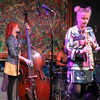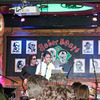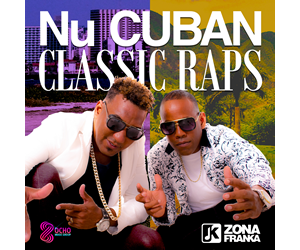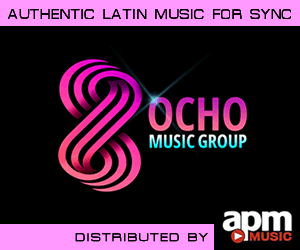Indice - Table of contents
Lo Nuevo[hide]
Reportes: From The St... : Jazz Plaza ...
Fotos: Tom Ehrlich : Irakere 50th Annivers...
Fotos: Tom Ehrlich : Irakere
Resenas: Joey Altruda Presents: El Gran ...
Reportes: From The St... : Cubadisco 2...
Timbapedia: 09. Interviews -... : Carlos del Pino ...
Fotos: Tom Ehrlich : 2023 Monterey Jazz Fe...
Fotos: Tom Ehrlich : 2023 Monterey Jazz Fe...
Fotos: Tom Ehrlich : 2023 Monterey Jazz Fe...
Fotos: Tom Ehrlich : 2023 Monterey Jazz Fe...
Grupos: Tirso Duarte
Grupos: Tirso Duarte : Discography
Grupos: Charanga Habaner... : 8. El bla bla bla
Grupos: Pupy y los que S... : Tirso Duarte
Fotos Del Día [hide]
The Roots of Timba, Pt I - 1948-El Cerro tiene la llava
1948 Arsenio Rodríguez - El Cerro tiene la llave - tumbao 1
0xx0 xx0x xx0x 0xxx 3-2 son clave
xxxx xxxx xxxx xx00
xxx0 0x00 xxx0 0x00 MIDI example 1
bassist: Lázaro Prieto
source: Montuneando
notes: This is a fairly typical Arsenio bass tumbao, with both the bombo and ponche doubled on each side of the clave. The modal harmony is a very early example of something which would become extremely common in Nuyorican salsa. There's only one chord - F7 - but although it's a "dominant" chord which would normally want to resolve to Bb, it's played in a way that makes F sound like the tonic -- thus it can be thought of as being in the "Mixolydian mode".
If the bass tumbao and harmony look forward to Nuyorican salsa, the lyrics are clearly predecessors of timba. In fact, the title phrase became one of the coros of La expresiva, a track from what's often considered to be the first timba album, NG La Banda's En la calle.
NG La Banda: La expresiva
source: En la calle
Arsenio popularized the practice of writing songs in homage to the various barrios of Havana, now one the most common subjects of timba lyrics (perhaps second only to food/sex double entendres). The idea grew from perhaps the most important of Arsenio's many musical innovations -- the incorporation of Rumba and other folklroric genres into popular music. Rumba, not previously permitted on radio or in the concert halls, was performed primarily at non-commercial local gatherings and as such, each barrio tended to develop its own special flavor and style. As David García explains, the success of Juventud amaliana resulted in the people of every barrio wanting their own special Arsenio song, and he happily obliged with a long series of classic tracks such as El Cerro tiene la llave, A Belén le toca ahora, Los Sitios acere, Juventud de Cayo Hueso, and El rumbón de Luyanó.
The bloque (cierre) and diablo of El Cerro are truly inspired.
El Cerro tiene la llave - bloque -- 2-3 son clave
xxxx xxxx xPPP Pxxx signature piano lead-in phrase
0x0x xx0x 0xxx 0x0x 3-against-2 bloque
xx0x 0x00 0xxB BxBx pickups to bass tumbao
El Cerro tiene la llave - tumbao 2
xx0x 0xxx 0xx0 xx0x 2-3 son clave
xxxx xxxx xxx0 0x0x pickups to bass tumbao
0x0x xx00 xxx0 0x0x bass tumbao 2 - MIDI example
notes: The bass line marks the clave in a very timba-esque way and features an extremely catchy and unique melody featuring leaps of 4ths and 5ths. The interweaving of the coro with multiple horn parts provides another clear prophecy of the distant future. Also of interest in the sultry blues note in the lead trumpet. By this time Chano Pozo and others had been traveling to the US and exchanging musical ideas with American Jazz musicians. The journey of the blues scale and the clave from distinct regions of Africa to distinct regions of the New World and the subsequent intermingling of the two concepts in the early and mid-20th Century is one of the most compelling themes of Sublette's must-read history of Cuban music, which led me to discover the wonders of Arsenio and the inclusion of this chapter in this book, which was originally intended to cover only the period from 1989 onward.























